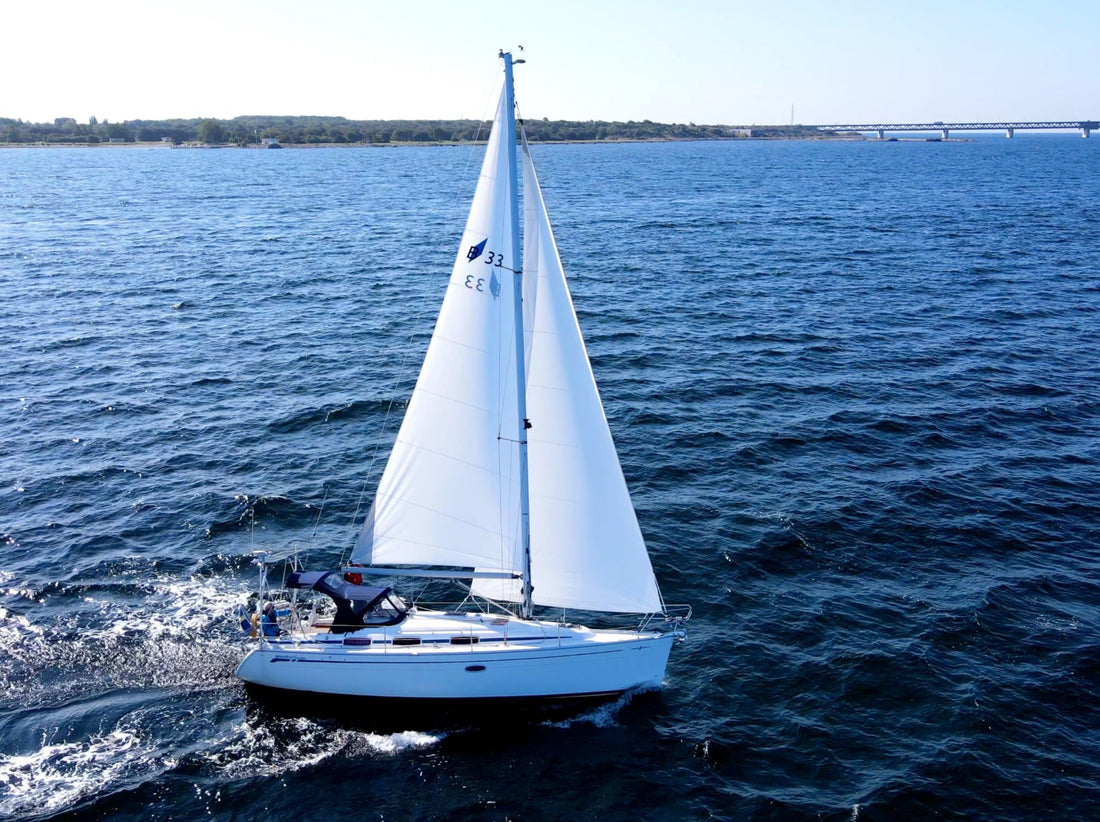Sometimes it can be difficult to make a decision about which type of sail to choose. Investing in new sails is a big decision that affects your boat's performance, sailing experience and longevity. Whether you're sailing short-handed for pleasure or long-handed, there are several factors to consider. Here we go through the most important aspects you should consider when choosing new sails.
Material selection
This is usually where you get stuck. Is dacron better than laminate? Should I use the same material in both mainsail and genoa? The answer is of course not entirely simple, but depends a lot on how you use your boat.
- Dacron is the most common material for cruising sails. It is durable, usually has the lowest price and has a long life. You can have a dacron sail for many years, the big difference with laminate is the way the cloth stretches. The shape of a dacron sail often stretches out faster and the initial properties are somewhat distorted. This is unlikely to affect the pleasure sailor who cruises on the best days of summer.
-
Laminate sails give the sails better shape stability and performance. The stretch is minimal and the sail's characteristics will be experienced as when the sail was new for many seasons. Laminate sails weigh less than dacron, which makes them easier to handle and can make a big impact on larger boats with big sails. Laminate sails are well suited for those who sail a lot during the season or if you are on long voyages and appreciate a sail that keeps its shape over time.
Battens
This discussion also depends on the type of mainsail you have. Kapell & Annat (KA Sails) can offer everything from no battens to full batten sails.
- For roller doors we can offer short vertical battens that are evenly spaced across the leech. This choice makes the sail slightly better as the stability of the leech is improved and helps the aerodynamics of the sail. Without battens the sail is a little less shapely, but at the same time, many furling boats have a larger genoa that provides most of the speed and battens make minimal difference.
- For conventional mainsails we can offer both with short horizontal battens, but also full batten sails.
- Full battens mean that the battens run from the leech to the mast. The advantages of full battens can be summarized as better performance, easier handling and increased sail life. This is mainly due to the fact that flutter in the sail is reduced, especially when hoisting and lowering, but also general flutter when sailing. Full battens also require the possibility to have the right traveller in the leech.
- Short battens have the advantage of less wear and tear on the mast, but also that the price is a little easier on the wallet.
UV protection
All our roller furling sails are offered, regardless of the choice of material, with UV protection in Sunbrella used for canopies. This means that you can often choose the same color of the sail's UV protection as on your canopies, which can give a very nice visual impression of the boat. The UV protection is sewn to the aft edge of the furling genoa so when the sail is furled, the Sunbrella fabric is the only thing facing the sun and protects the sailcloth -> longer life.
On furling mainsails, the UV protection is sewn onto the triangle that protrudes from the mast towards the boomhead when the sail is furled.
When the mainsail or genoa is not in use, it is good to protect the sails from the sun's UV rays, bird droppings, rain and other dirt using Sail cover such as the lazybag, Boom cover or genoa sock.
Foam luff
On furling headsails it is good to have a belly compensator to make the furling better and more gentle on the sailcloth. This is included in all our sails. The belly compensator can be made in different ways, but ours are offered with a foam rope, which is a sewn-in tamp at the luff.
If you're wondering what would be best for you, don't hesitate to contact us for help!

